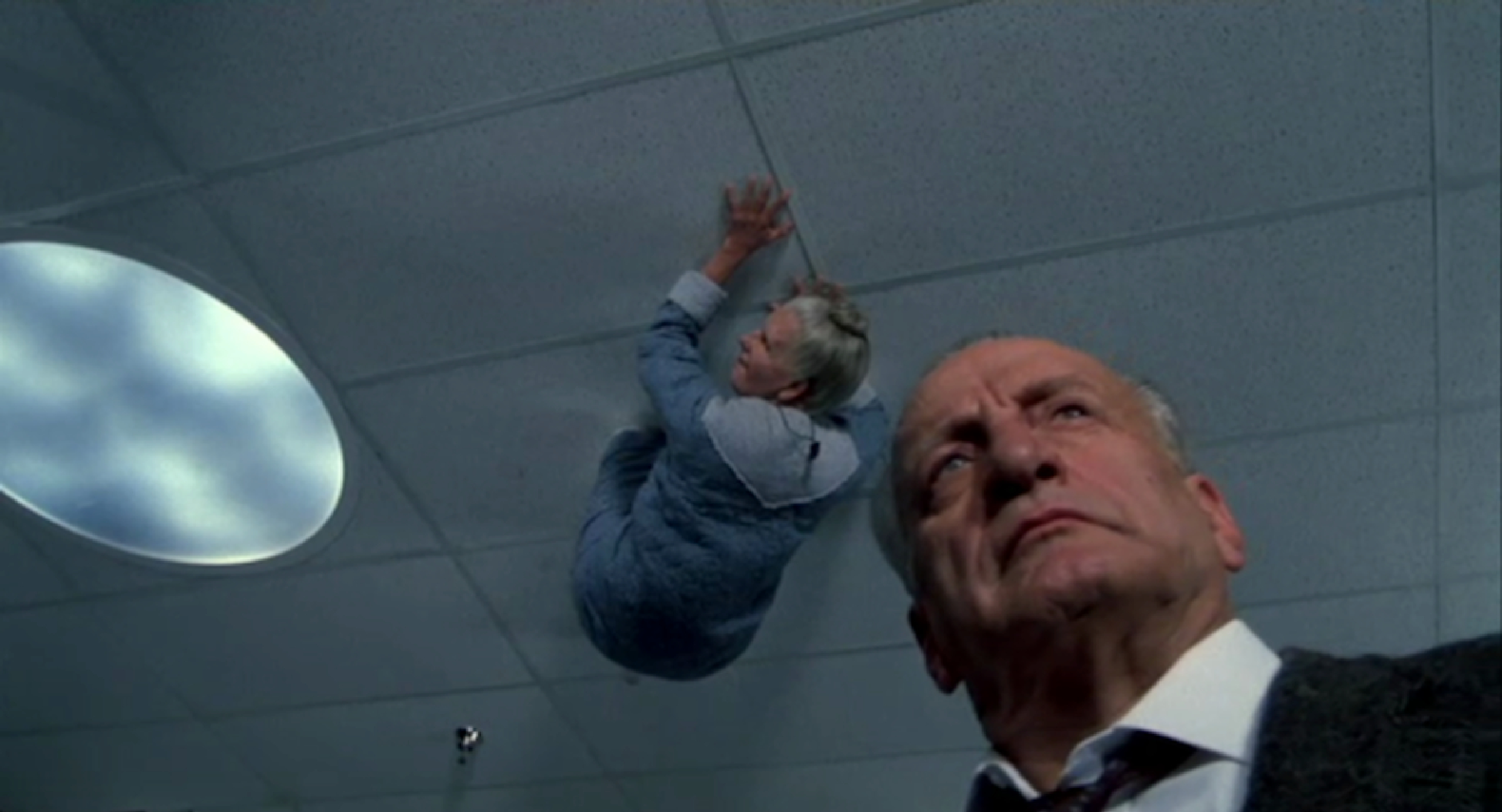The Exorcist III – Film Review
Published September 5, 2023

Police Lt. Kinderman notices similarities between his current murder investigation and the methods used by the “Gemini” killer who was executed fifteen years before. He soon discovers a hospitalized mental patient claiming to be the dead serial killer, but who looks uncannily like a priest Kinderman knew who died during an exorcism. As more bodies are found, Kinderman looks for connections between the two supposedly dead men.
The Exorcist III is a haunting masterpiece that often stands in the shadow of its iconic predecessor, The Exorcist (1973). Released in 1990, this film offers a chilling and intellectual exploration of evil, faith, and the human psyche. While it may not have garnered the same level of acclaim as the original, The Exorcist III deserves recognition for its atmospheric storytelling, impeccable performances, and thought-provoking themes.
William Peter Blatty, who wrote the novel upon which The Exorcist III is based, takes the director’s chair for this installment. The film strays from the supernatural possession theme of the first movie and instead focuses on a series of gruesome murders in Georgetown, Washington, D.C. Lieutenant Kinderman (played by George C. Scott) is the film’s central character, and his investigation leads him down a dark and twisted path.
The narrative weaves psychological horror with detective thriller elements. It’s a slow-burn horror film that relies on tension and dread rather than cheap jump scares. Blatty’s script is intelligent and dense, filled with philosophical musings on the nature of evil and the existence of God. Some viewers may find the film’s deliberate pacing and intricate dialogue a bit challenging to follow, but those who appreciate a horror film that engages the intellect will find it rewarding.
George C. Scott’s performance as Lieutenant Kinderman is nothing short of exceptional. His portrayal is nuanced, capturing the character’s grief, frustration, and determination with remarkable authenticity. Scott’s commanding presence elevates every scene he’s in, and he delivers some of the film’s most powerful monologues with gravitas.
Brad Dourif‘s role as the mysterious and disturbed patient, Patient X, is another standout performance. Dourif is captivating and genuinely unsettling, adding a layer of horror to the film that is difficult to forget. His chemistry with Scott is palpable, creating a dynamic that keeps the audience on the edge of their seats.
The Exorcist III excels in creating a gloomy and oppressive atmosphere that lingers long after the credits roll. Gerry Fisher‘s cinematography is moody and atmospheric, emphasizing shadows and darkness to great effect. The film’s Georgetown setting, while lacking the iconic stairs of the original, still feels like a character in its own right, contributing to the overall eerie ambiance.
The use of practical effects, particularly in the gruesome murder scenes, is notable. While some of the effects may appear dated by today’s standards, they remain effective in conveying the horror and brutality of the crimes. The film’s sound design is also commendable, with eerie whispers and unsettling noises enhancing the sense of dread.
The Exorcist III offers a different kind of horror than its predecessor. Instead of supernatural terror, it delves into psychological horror, exploring the darkness that resides within the human soul. The film uses dream sequences, disturbing imagery, and unsettling conversations to create an atmosphere of dread. It relies on the audience’s imagination and intellect to generate fear, making it a thinking person’s horror film.
While it may not have the iconic “head-spinning” moments of the original, it does feature a few chilling scenes that will leave a lasting impact. Brad Dourif’s transformation during one particular sequence is especially unsettling, showcasing the film’s ability to induce genuine fear.
One of the strengths of The Exorcist III lies in its exploration of deep and thought-provoking themes. Blatty’s script delves into questions of faith, evil, and the existence of God with a philosophical depth rarely seen in the horror genre. The film challenges the audience to contemplate the nature of evil and its presence in the world, offering no easy answers.
The recurring motif of Gemini, the duality of good and evil, is woven throughout the narrative, adding layers of symbolism and meaning. Kinderman’s conversations with a priest (played by Ed Flanders) provide a platform for profound discussions about faith and theodicy.
The Exorcist III is a criminally underrated gem in the horror genre. While it may not achieve the same level of cultural significance as its predecessor, it stands on its own as a masterful and intellectually stimulating horror film. With exceptional performances, a richly layered script, and a haunting atmosphere, it’s a must-watch for horror aficionados who appreciate a more cerebral approach to fear. Despite its flaws, The Exorcist III deserves to be recognized as a compelling and thought-provoking entry in the horror canon.
